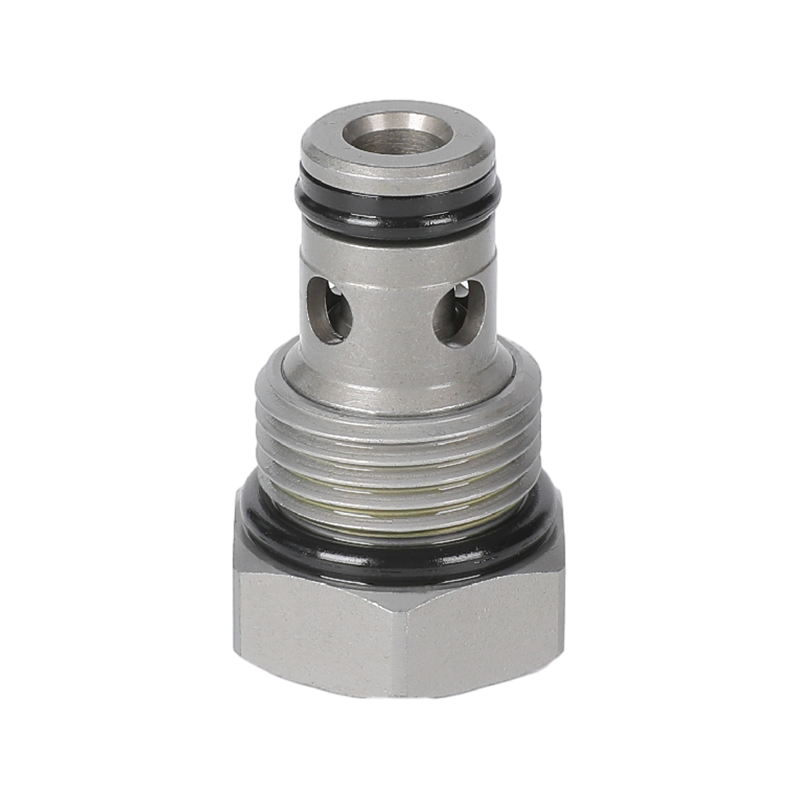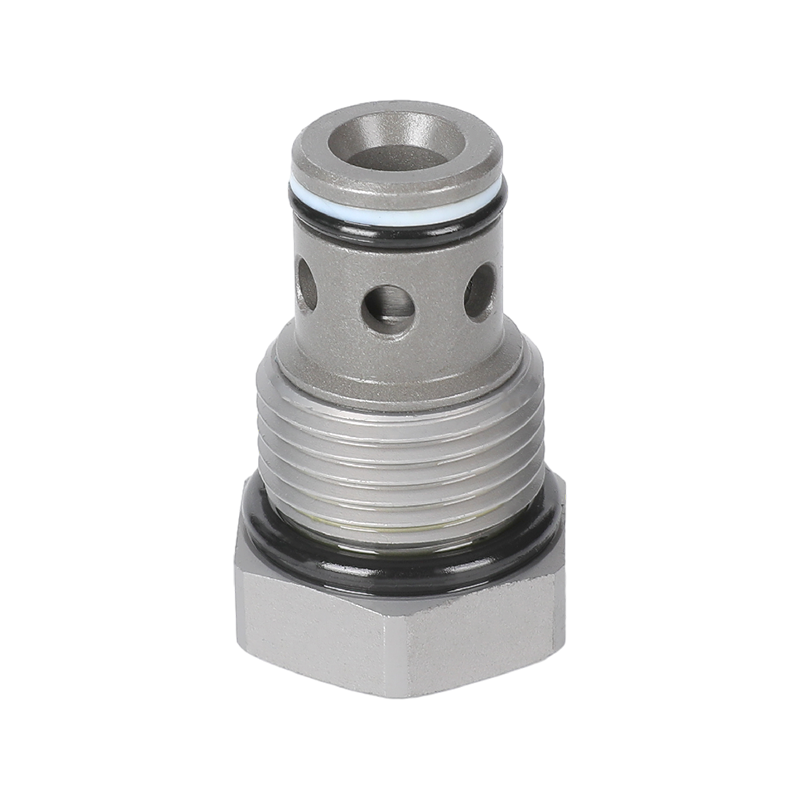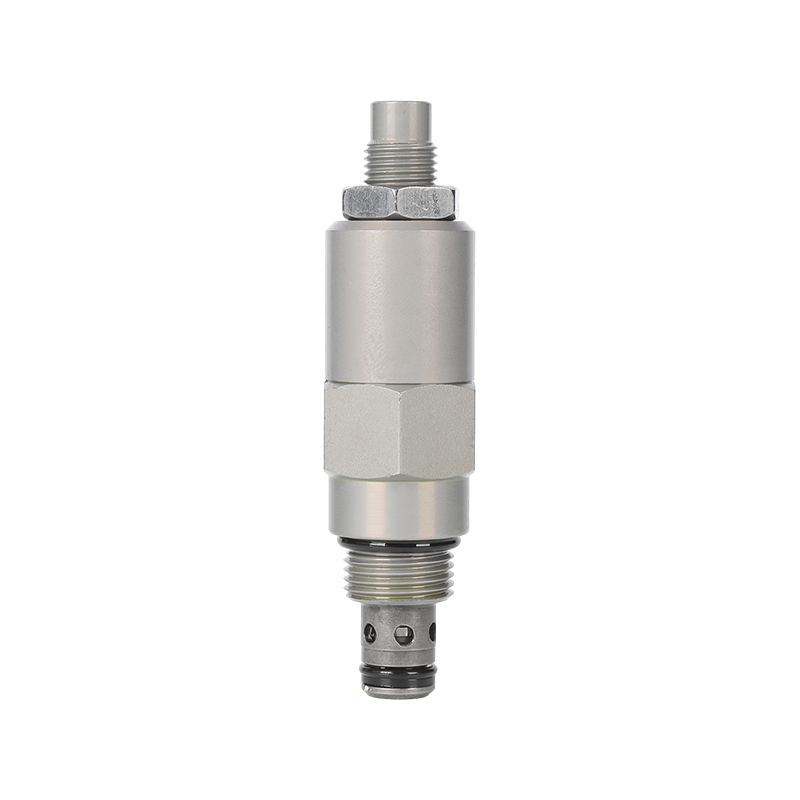Cartridge Check Valves play a vital role in hydraulic systems and can significantly improve the safety and efficiency of equipment. These valves help the system maintain stability and reduce potential risks during operation through sophisticated design and automated functions, ensuring long-term reliability and efficiency of the equipment.
The main function of Cartridge Check Valves is to prevent the reverse flow of liquid or gas. In hydraulic systems, reverse flow may bring great safety hazards, including equipment failure, pressure instability, and even damage to the entire system. Cartridge Check Valves, through their unique one-way flow design, can automatically close the valve when the liquid attempts to flow back, allowing the fluid to flow only in the predetermined direction. This design effectively avoids reverse flow in the hydraulic system, thereby protecting various key components in the system and avoiding accidents. Cartridge Check Valves play a core role in ensuring equipment safety.
In addition to enhancing the safety of the system, Cartridge Check Valves can also significantly improve work efficiency. Their compact design allows them to be directly integrated into existing hydraulic systems without the need for complex piping and connectors, which greatly simplifies the system design and installation process. This integrated design not only saves valuable space, but also improves the compactness and reliability of the entire system, reducing the multiple connection points that may appear in traditional valve designs, thereby effectively reducing the risk of leakage and installation difficulty. The automation function of Cartridge Check Valves enables the system to self-regulate, reducing the complexity of manual operation and further improving work efficiency. Operators do not need to make frequent adjustments and maintenance, and the system can operate more autonomously, thereby reducing the error rate and difficulty of operation.
Another major advantage of Cartridge Check Valves is that they reduce maintenance costs and extend the life of equipment. The stable operation of hydraulic systems is often affected by pressure fluctuations and liquid shocks. These fluctuations not only affect the efficiency of the system, but also may accelerate the wear of components. Cartridge Check Valves can reduce vibration and shock within the system through smooth flow control, reducing this negative impact. They can ensure the stability of liquid flow and reduce excessive wear of internal components of the system, thereby extending the life of the equipment. The efficient operation of Cartridge Check Valves reduces the frequency of system failures and reduces the cost of equipment repair and replacement, thus saving companies a lot of maintenance costs in long-term operation.
Cartridge Check Valves also excel in improving flow control accuracy. Flow control requirements in hydraulic systems are very strict, and any unnecessary flow fluctuations will affect the overall performance of the system. Cartridge Check Valves are precisely designed to adjust the flow direction of the fluid when needed, ensuring that the fluid in the system always flows in the predetermined direction. This precise flow control not only improves the efficiency of the system, but also enhances the stability and reliability of operation. In many application scenarios that require highly precise control, Cartridge Check Valves are indispensable, and they can effectively ensure stable flow and improve the performance of the system.
Cartridge Check Valves help improve energy efficiency. In hydraulic systems, reverse flow not only leads to reduced equipment performance, but also causes unnecessary energy loss. Cartridge Check Valves can prevent this reverse flow, reduce unnecessary energy consumption, and thus improve the energy efficiency of the entire system. By effectively managing the flow direction of the fluid, Cartridge Check Valves help the hydraulic system maintain an efficient working state while reducing energy waste. This is not only crucial for saving energy, but also important for improving the overall operational efficiency of the enterprise.

 English
English русский
русский
 ++86-0575-87669088
++86-0575-87669088


